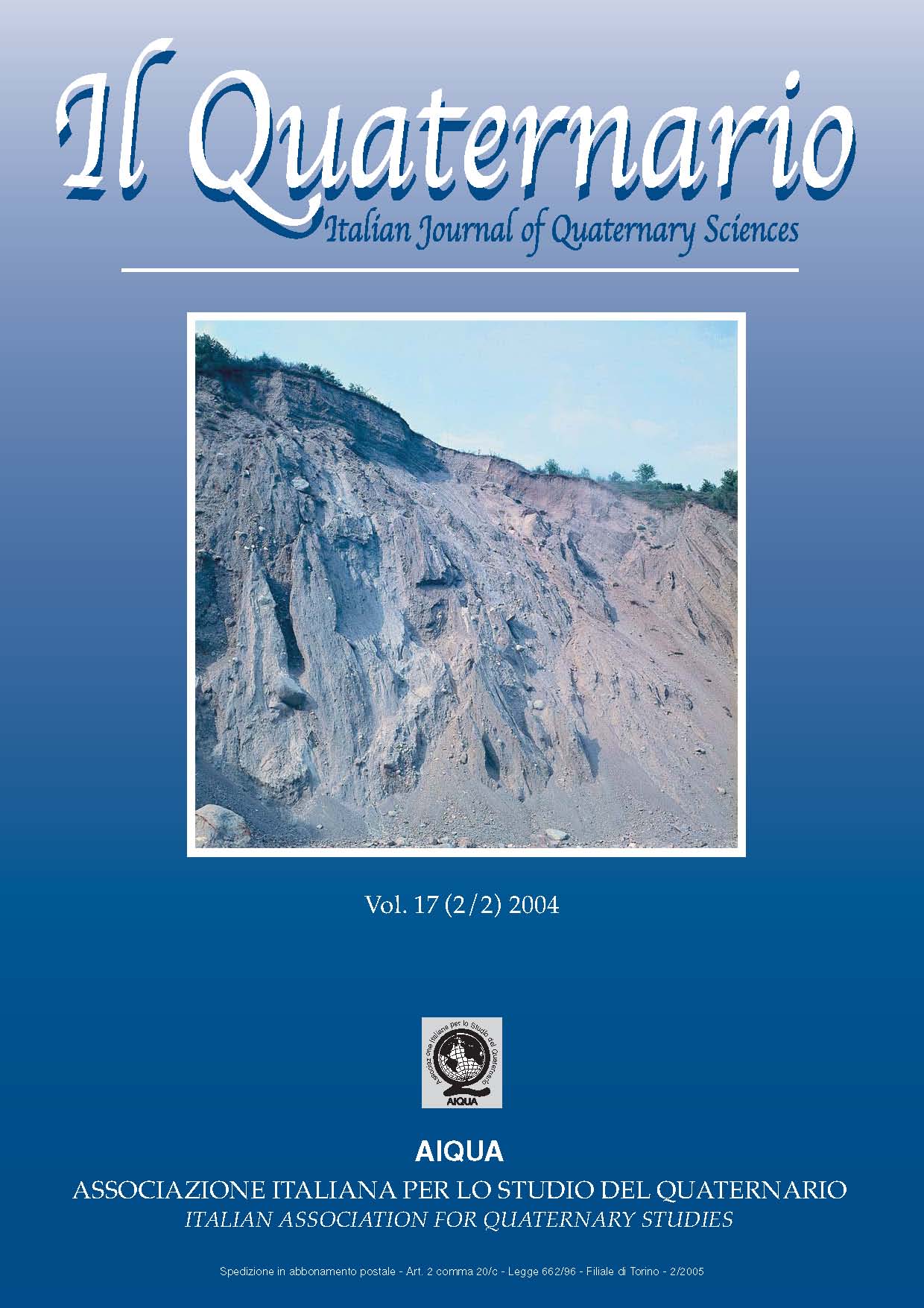IL MOVIMENTO GRAVITATIVO PROFONDO DI CRACO (BASILICATA IONICA)
Main Article Content
Abstract
M. Bentivenga, M. Coltorti & G. Prosser, Deep-seated gravitational movements of Craco (Basilicata Ionica).
IT ISSN 0394-3356, 2004.
The Craco ridge (Matera, Southern Italy) experienced repeated landslide movements, particularly along the southwestern slope, starting from the end of the year 1959. The Craco village, located at the top of the ridge, was almost completely abandoned between 1965 and 1980 because of protracted landslide activity. The ridge is oriented NW-SE and is located at the most external thrust front of the Southern Apennines. A geological and geomorphological survey has been performed in the area that extends between the Salandrella and Bruscata creeks. Detailed mapping has been used to show the relationships between landscape evolution and the various landforms in the frontal part of a recent mountain belt. Furthermore, several exposures document the relationships between strongly deformed tectonic units and the Pliocene deposits, composed of clays, sandstones and conglomerates, that sedimented during the late deformational stages of the mountain belt (Balduzzi et alii, 1982; Sella et alii, 1988; Pieri et alii, 1997; Bentivenga et alii, 2003). The area underwent generalised uplift since the beginning of Middle Pleistocene, as shown by the altitude of the terraced deposits of the same age, all around the Taranto Gulf (Bentivenga et al., 2004). Interaction between uplift and quaternary climate changes led to the deposition of terraced alluvial units during the late Middle-Late Pleistocene and to the deepening of the valleys that were filled by minor aggradational deposits during the Holocene. The detailed geomorphological map is useful to understand the importance of the gravitational movements in shaping the present landscape. A relationship between the morphological sequences and the deposits responsible for the landscape evolution has been defined. The slopes of the Craco ridge have been shaped by streams, badland erosional processes, and, more significantly, by huge landslides, that affected all the oucropping lithologies. Multitemporal analysis has been used to show the evolution of the gravitational movements during the last 50 years. In this paper we suggest that landslides represent the reactivation of a deep-seated gravitational slope deformation. Furthermore, we propose that evidence coming from studies of Quaternary geology and geomorphology should be taken into account to analise huge gravitational movements, a relevant topic in risk assessment still poorly investigated in the Italian territory
Article Details
Section

This work is licensed under a Creative Commons Attribution-NonCommercial-NoDerivatives 4.0 International License.
The Author grants usage rights to others using an open license (Creative Commons or equivalent) allowing for immediate free access to the work and permitting any user to read, download, copy, distribute, print, search, or link to the full texts of articles, crawl them for indexing, pass them as data to software, or use them for any other lawful purpose.

